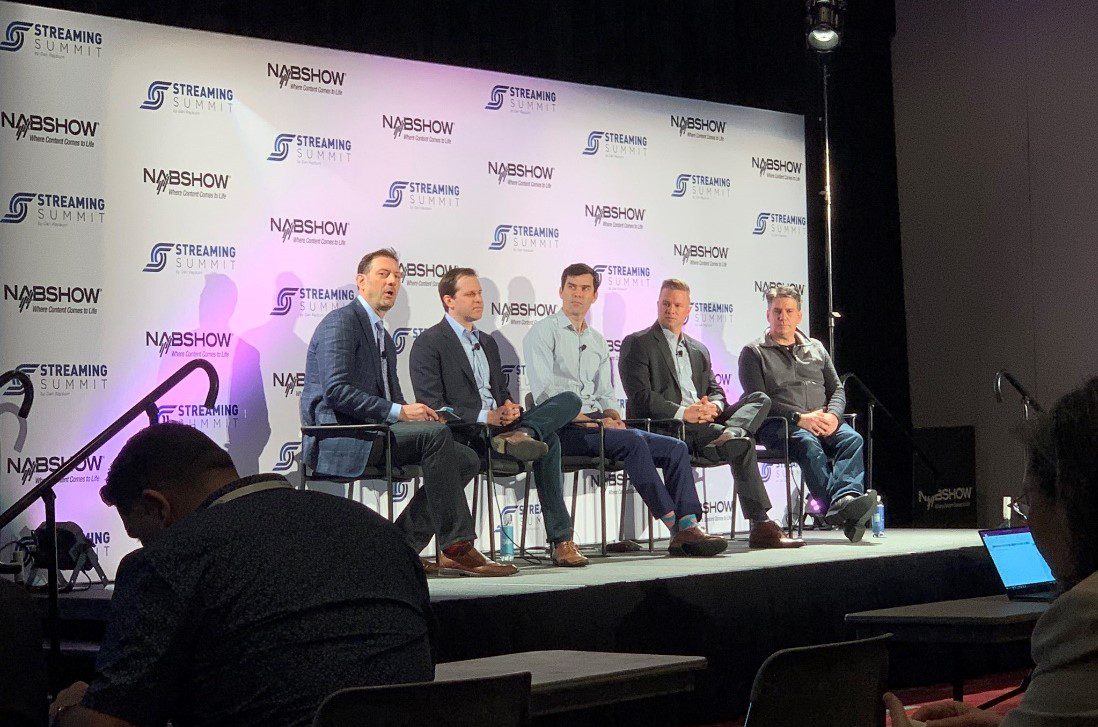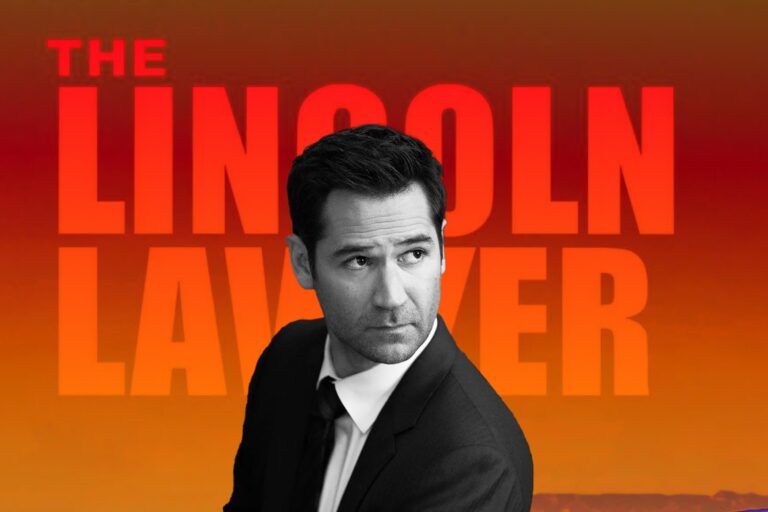FloSports: How the Floreani Brothers Champion the Burgeoning Sphere of OTT Sports
Over recent years, there has been a lot of coverage about how consumer viewing preferences are changing in terms of sports content. One of the biggest drivers in this scene has been the Austin-based startup FloSports.
As a first-mover in the burgeoning sphere of over-the-top (OTT) sports, FloSports is amongst the stunning success stories in the ever-evolving media landscape characterized by mass consumer migration towards digital platforms. Having a low-key beginning with only $10,000, the scrappy startup has now been taking on ESPN (Entertainment and Sports Programming Network) landscape, being dedicated to delivering under-served fans the sports experience that they expect and deserve.
So, how has FloSports established a solid empire as the innovator in live event streaming? How did the brothers behind this Austin-based startup manage to go big by going small? Let’s read on to figure out!
FloSports Got Off to a Rocky Start!
The founding story of FloSports goes back to 2006 when two brothers, a college track athlete Mark Floreani and a wrestler Martin Floreani decided to form their own business with only US$10,000 to their name but bottomless ambition and no shortage of enthusiasm. Traveling throughout the US in their $3,000 Ford Econoline van, the Floreanis spent several years competing in sports competitions, capturing footage during events and editing videos to post online.

FloSports website was initially launched with free video content. Different from several other conventional media companies, FloSports’ approach was to appeal to the underserved: the cord-cutters and cord-nevers unfulfilled by the traditional cable bundle; the small communities of fans who took interest in local sports and athletes; the rights holders in niche or less popular sports who historically had to manage with fleeting TV coverage and inconvenient time slots; and the sportsmen and women who had long struggled for public profile and lucrative sponsorship contracts as a result of diminished visibility.
“Here in the United States, the linear model just doesn’t work for most of these sports,” stated Mark Floreani, FloSport’s Co-Founder and CEO. “We knew there needed to be a better way.”
There goes without saying that for all times, sport is best consumed live, absorbing viewers’ real-time attention in a way that little else does. That’s why the major leagues keep raising their fees to broadcast their biggest games; thereby the fees that cable companies must pay to carry it also keep increasing.
Nonetheless, ESPN’s biggest bulwark is that several of its most important TV contracts would not expire for many years. This could become a trap, though. In the 2000s, whereas the world continued to tilt away from cable TV, the network’s deals with the cable and satellite companies prevented it from streaming its biggest games. Furthermore, as a TV channel had only 24 hours a day to fill, it had to focus on the biggest events – major sports championships.
Meanwhile, FloSports – as a digital platform – could air as much as it can film, thereby enabling sports fans to dive deep. Although their audience segment was smaller, the brothers bet that all those niches would add up to a significant business.
In the business’s first years, though, it didn’t. “Mavens in the sports loved us,” remembered Martin, recalling on these tough times, “but we were just selling ads against the videos, and it became a small, lifestyle business.” As a typical budding venture, Mark and Martin Floreani lived a scrappy, hand-to-mouth existence for the next few years. Whereas these two young entrepreneurs did not lack passion and were resolute in their plan to give underserved sports – including their beloved track and wrestling – a platform on which to prosper, doing business was proving to be challenging at both ends.
In 2011, the brothers hired an experienced executive to become their company’s CEO, who doubled down on the ad strategy. They had expanded into swimming and gymnastics, yet still didn’t make enough money to grow further and even shut down swimming for a few years.

After the initial expansion into swimming and gymnastics, the Austin-based startup had its revenue stalled, with six years in revenue barely topping $1 million. “We were starving to fund growth, pouring every dollar back into the company, and it just wasn’t what we’d set out to create,” shared Martin.
By early 2012, FloSport transitioned to a subscription-based model where he set a modest goal of covering payroll through subscriptions. Unfortunately, at that time, as for the vast majority of viewers, even sports fans, the notion of purchasing direct access to content from the creators remained a tough sell and most sports marketers had yet to buy into the online subscription model. “Nobody was doing subscriptions online at the time,” he recalled. “It was really dismissed internally.”
In around mid-2012, the new subscription-based model was bringing in 20% of the company’s revenue. Those dollars were promising, yet still tiny to run the business, which prompted the pair to scale back their output and sever ties with the chief executive they had hired a year earlier.
“It was like getting on the mat with the big guy when you don’t know how to wrestle,” Martin said.
FloSports Finally Saw Light at The End of The Tunnel
By the summer of 2014, the Floreanis’ fortunes had improved dramatically. Magically, FloSport’s revenue doubled each of the next two years. A Series A funding round, led by Causeway Media Partners, raised $8 million, injecting the essential capital to keep the brothers’ dream alive. In that year, the company also generated tens of millions in revenue this year and double its subscription revenue.
“We continue to work our way up the food chain,” stated FloSport’s Co-Founder & CEO. “The cool thing about us is our model hasn’t changed. As you see all these new people come in and they’re trying to disrupt their own model, we’ve been a direct-to-consumer, subscription service from basically when we started getting serious about our business in 2013.”
Since securing that initial fund-raising round, the Floreanis have succeeded in courting further investment. A Series B funding round in August 2016 proved a game-changer, raising in excess of $21 million from the likes of DCM Ventures, BDMI, Discovery and WWE. Finally, the deals started to flow.
FloSports Has Taken Over Its Own Expansion Game
“We had about four sports in 2014, a couple of employees,” shared Mark Floreani. “Now we have 24 sites, 22 different sports that we cover, over 230 people, and we’re really rocking and rolling.” By 2017, FloSport generated up to 10 million in revenue and doubled its subscription revenue; besides, its overall monthly audience reached 8 million, with 80% of its content remained free for everyone.
Whereas the company does not publicize its precise subscriber numbers, the CEO shared that FloSports has been recording “near-100% year-on-year growth”. Its social media reach has been soaring in a similar fashion: in the first half of 2018, the company’s social channels were estimated to have amassed a combined 307.1 million video views on Instagram. That figure is more than the combined total of all teams and the main league network in both the National Football League (NFL) and Major League Baseball (MLB).
Live events are behind the paywall, along with technique tutorials and longer-form documentaries. By early 2019, FloSport’s fast-growing subscriptions account for two-thirds of its revenue, and, ironically, the company now sees ads as a major opportunity.

With a view to expanding the business’s offerings and delivering sports viewers their desired content, FloSports leveraged an unashamedly opportunistic approach in regard to acquisitions and growth opportunities. Understandably, almost nothing is off-limits provided that the numbers stack up.
Notably, in May 2019, the Austin-based sports streaming company demonstrated its flexible growth strategy when it acquired the Rugby Channel, a two-year-old OTT platform, from Rugby International Marketing (RIM), the commercial subsidiary of USA Rugby. That deal gave it access to stream 51 competitions and 200 international and college matches annually. Then, two months later, the company did pocket exclusive rights to distribute the linear Eleven Sports US channel digitally, adding a further 500 live events per year.
FloSports Championed Its OTT Niche with Authenticity
Now, FloSports streams hundreds of thousands of competition events in the US and abroad. Yet, the company is not only committed to quantity. Together with a breadth of live events, its “bread and butter” is deeper, more authentic and round-the-clock content that caters to die-hard practitioners and enthusiasts of all manner of sports – no matter how niche they may be.
This explains why FloSports’s output is arranged across an array of nearly two-dozen sports-specific content verticals – cycling sits within FloBikes, for example, while basketball is housed under FloHoops and FloCombat shows MMA and fight sports.

“Our mantra until this point is people don’t want to dilute their passion,” emphasized Mark Floreani, explaining his diverse vertical content strategy. “When I go to the cycling site, I want to be in my cycling world. I don’t want to be bombarded with football or track, and the reason is they can go to ESPN for that. This is their place for their passion.”
Such a solid commitment to content authenticity is reflected in FloSports’ approach to production and presentation.
“A couple of months ago, our play-by-play guys were wearing suits,” the Floreani remembered. “I was like, ‘Hey, stop trying to be ESPN’, right. That’s not what our generation and the younger generation want. That’s not what they grew up with. They grew up with you wearing some stupid singlet, making jokes. Just because we have bigger rights deals, let’s not change who we are. It’s important to stay authentic and not try to be someone we’re not.”
When it comes to the production side, a workforce of former athletes and coaches has been hired “to ask the right questions” and speak out unique, in-depth insights, while a team of knowledgeable producers and editors that already “know the baseline” of their chosen sport bring additional expertise. FloSports’ Chief Product Officer, Tim Sullivan, revealed that the company makes a point of refusing to “dumb down” its coverage for a mass audience, choosing instead to “speak up” to the well-informed communities it serves.
As the Floreanis stressed, “It’s about being authentic. When we started, reality TV was all the rage and it wasn’t the reality. We were creating authenticity. We try not to be polished, we want to make sure that the viewer feels the sweat.”
“When Flo entered the market and made a legitimate commitment to creating this platform that promoted athletes and events, it really started to change the culture, to draw attention to wrestling and develop a following,” commented Rich Bender, Executive Director of USA Wrestling, the sport’s governing body. “People could see matches, know what [former Olympic champion] John Smith had for breakfast, how [legendary Penn State coach] Cael Sanderson organizes his practices.”
That added visibility and polish what Rich Bender calls its “for-real, ESPN-level production quality”. Those things have directly improved USA Wrestling’s fortunes. Student-athletes are increasingly being pushed to specialize in one sport, and wrestling’s high school participation rate has flattened or even dipped, yet USA Wrestling’s budget has more than tripled since 2000, and in 2016 it signed its first sponsorship deal with Nike.
Data Obsession: FloSports’s Key to Establish A Viable Sports Media Business Away from The Mainstream.

Whereas a myriad of factors, including content authenticity and partnership with other sports entities, perform the indispensable role in FloSports’s stunning prominence, the major tenet of their success lies in the data.
“The reason we’re winning is our obsession with data,” affirmed Martin. “When we launched FloSports, one thing I learned immediately is that we could have access to more data than any other media company in the world. After realizing this, we invested heavily in analytics.”
“That’s one of the coolest things,” noted Rich Bender, Executive Director of USA Wrestling. “Our decisions with FloSports revolve around real hard data: how long people watch, what they’re most interested in, what they’re most willing to pay for. We use that information to help shape our events.”
Apart from Nielsen ratings and audience surveys, cable and broadcast networks gain little data, thus they cannot offer that kind of precise measurement and rapid response. Meanwhile, “with each live event, we get more data, we understand more how to produce the right content and effectively monetize the event.”
Thanks to its data-driven and direct-to-consumer approach, Austin-based startup is “getting smarter” and “more confident” in its business strategies all the time. “We make sure that we have the data to make educated bets,” Mark added. “Every day we get more and more excited and the data comes back that we can do bigger and bigger deals.”

Their subscription model is also a strong weapon to establish and maintain a direct relationship with their consumers, empowering them with insightful data into user behavior and content consumption. “As a result, we are much better informed on how visitors and subscribers activity relate to subscriber churn, retention and lifetime value.”
With the interest of widening their understanding as to these data points, FloSports has invested in an in-house business intelligence platform called Neptune. The platform merges disparate data sources to show FloSports’ top-performing sectors in near real-time. “This unique subscriber insight and the speed and precision of our informative data sources gives us a significant competitive advantage relative to competitors,” Martin Floreani explains.
As sports fans continue to turn away from cable providers and shift toward digital-empowered alternatives such as FloSports, the Floreanis believed the company would continue to expand its team and strengthen its grip on the blossoming industry.
The Bottom Line
From the humble beginning, FloSports has become a household name, securing its place as a disruptor within the new, live-streamed world of sports. Great success came slowly, yet, today, the Floreanis’s Austin-based company remains one of the most surprising successes in the rapidly shifting sports-media landscape.









